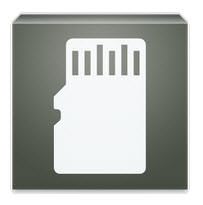APPS can write to the entire SD card on Android 5, without root
– Take a look at these tips, tricks, and solution you can use to make your life much easier with your devices whenever problems arrive and complications which you may find difficult to deal with.
Android KitKat 4.4 has been a headache for those of us who have phones with an external SD card. Basically, the problem in this version of Android has been that the applications do not have free access to the SD card. This, in practical terms, means that certain applications do not work as they should: they cannot save files in any folder within the SD, copy them, move them or delete them. This is a very serious problem especially for file managers.
Apparently this SD card access problem in KitKat is fixed in Android Lollipop 5.0. In this new version of Android, applications will once again have full access to the SD card, as commented by Google engineer Jeff Sharkey in his profile on the Google Plus social network:
In KitKat we introduced APIs that let apps read/write file in app-specific directories on secondary storage devices, such as SD cards.
We heard loud and clear that developers wanted richer access beyond these directories, so in Lollipop we added the new ACTION_OPEN_DOCUMENT_TREE intent. Apps can launch this intent to pick and return a directory from any supported DocumentProvider, including any of the shared storage supported by the device. Apps can then create, update, and delete files and directories anywhere under the picked tree without any additional user interaction. Just like the other document intents, apps can persist this access across reboots.
This gives apps broad, powerful access to manage files while still involving the user in the initial selection process. Users may choose to give your app access to a narrow directory like “My Vacation Photos,” or they could pick the top-level of an entire SD card; the choice is theirs.
You are pointing out that in KitKat applications were restricted to working only in specific directories, but in Lollipop you are opening up the possibility that applications can manage any directory within the SD. It also indicates that the user will be the one who authorizes an application to have access to a single directory or full access to the entire SD. The choice will be up to the user and this will have to be done only once.
There is other good news. In previous versions of Android (not just KitKat), if your internal memory was filled with many photos or videos taken with the camera, audio recordings or saved music, you were forced to manually move all that content to the SD card to free up space in internal memory. This has apparently been improved on Android Lollipop, according to what Dianne Hackborn, another Google engineer, posted on Google+:
Also worth noting is the new getExternalMediaDirs() method that gives you a place for your own files on any available secondary storage, without needing to request read/write permissions:
https://developer.android.com/reference/android/content/Context.html#getExternalMediaDirs()
It is aimed at developers, but, in essence, what it seems to be saying is that a directory or “public” folder can be generated on the SD card so that applications such as the camera or audio players can save the content that generated directly there. All applications will have free access to that directory and the user will not have to give authorization for them to access it.
We assume that this will require the application developer to work with both of these possibilities. This will be a relief, especially for KitKat users who have had to use tricks and tricks to make the applications work 100% in this version. Do not! Correction: This will be a relief for people with microSD slot phones who can upgrade to Android 5.0 Lollipop. If yours is a next-generation mobile, you will be receiving the update to this version of Android in the coming months. If you do not have one like that, you will have to continue using an application that solves this problem on your Android with KitKat 4.4.
How to transfer apps games to SD CARD
How to set the SD card as internal memory
How to install apps DIRECTLY on the SD card















